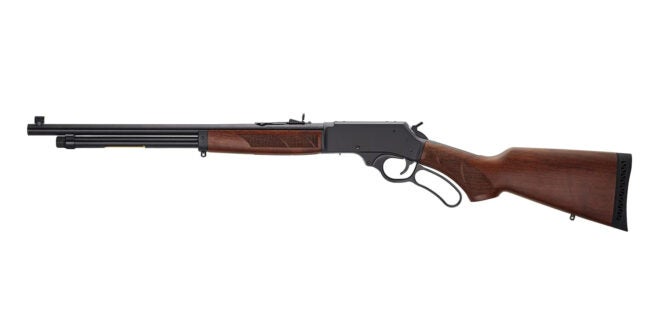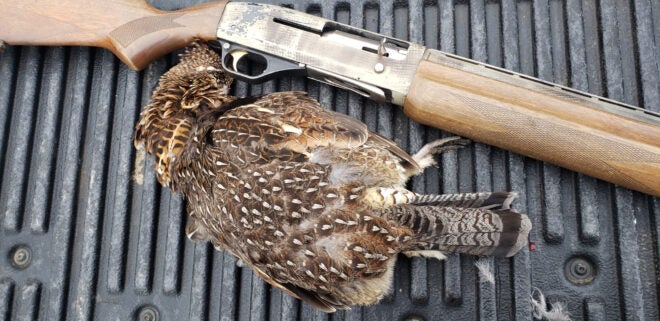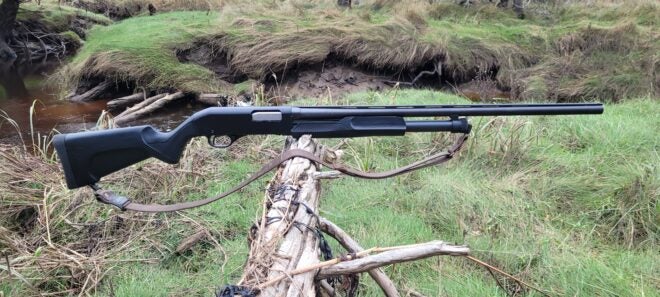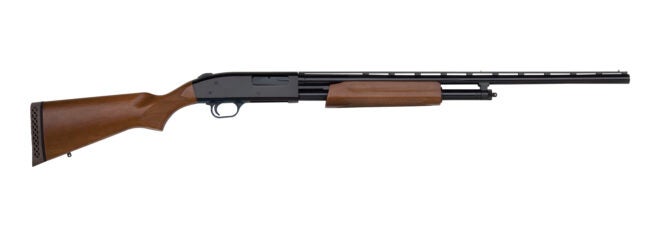Buying a firearm of any kind can be a bewildering experience if you don’t know what you’re looking for – even in the world of shotguns. Shotguns are the most versatile firearm of all, but that still doesn’t help you if you don’t know where to start looking. If you’re buying your first shotgun, what should it be? If you’re really coming into this scenario completely clueless, then I think there are a few factors that point most first-timers to an easy-to-find, easy-to-use shotgun. Start by asking some simple questions:
Am I buying this shotgun for a specific purpose?
If you’re buying a shotgun for shooting trap, then you should buy a shotgun built for that purpose. A 16 gauge single-shot would not be a good trap gun; research what shotgun you need for that specific purpose.
This applies to any other shotgun bought for a specific purpose. If you only want a shotgun for home defense, then it would be silly to buy a trap gun. If you’re buying a shotgun for a specific purpose and that’s the only use, find some expert advice on what you need to do that job.
What is local ammo availability?
Are you hours away from a well-stocked gun store? Does your local hardware store carry the ammo you need? In my area, there are plenty of spruce grouse for the taking, and a .410 would do the job nicely—but it’s almost impossible to find ammunition unless I’m willing to drive for 90 minutes.

As ammo shortages come and go, it is worth considering buying a shotgun with common ammunition availability, and the affordability of ammunition is also worth considering. It’s why I use a 12 gauge on late-season coastal black ducks, not a 10 gauge. I prefer the heavier-hitting 10 gauge, but cannot find shells locally. Even if I’m willing to travel to buy ammo, the current asking price is simply far too high for me to afford.
How much gun can you physically handle?
Shotguns are like all other firearms—when you fire them, there’s recoil, and some shotguns have a lot more recoil than others. A 12 gauge firing 3.5-inch shells can be punishing for any shooter, but especially on a smaller person. It would be a bad idea to choose a heavy-hitting magnum 12 gauge for a pre-teen on their first hunting trip.

And there’s more to consider than recoil; a full-sized hunting shotgun with traditional wood stocks and long barrel can weigh seven, eight, even nine pounds. That’s a lot of gun for a slight-built youth or even a small adult to tote around all day long.
What am I legally allowed to use?
This isn’t really an issue in the U.S.; just about everyone can own a semi-auto, pump-action, break-action, whatever they want.

However, this isn’t true everywhere in the world, and not every firearm is legal for every purpose. Your local game laws might prohibit semi-auto shotguns for deer hunting, for instance.
So what should I buy?
Once you’ve covered all those basic questions, I think there’s one shotgun that’s ideal for most first-time buyers: A pump-action 20 gauge shotgun. Generally speaking, it offers the best blend of reliability, affordability and usability.

Reliability
A pump-action is the best repeating shotgun for a beginner. All modern repeaters from reputable manufacturers are reliable enough; Mossberg, Remington, Benelli, Browning, whoever. But pump-actions are probably the most reliable repeaters at the lower end of the price range. If you do manage to break something, modern pump-actions are easy to repair.
Affordability
A reliable pump-action shotgun almost always has a lower price tag than a good semi-auto or double-barrel. Even now, when repeaters coming in from Turkey or other overseas markets have created a new low price point, the pump-actions they’re bringing in have the best price of those options.

Usability
A pump-action 20 gauge is useful for any kind of hunting, or for self defense, and while it isn’t a great choice for clay shooting, it’s enough to get you started.
Why not a 12 gauge? While 12 gauge is the most universal cartridge known to man, coming with birdshot, buckshot or slug loads, lethal or non-lethal self-defense ammo and many other choices—most of those choices are also available in 20 gauge, with a lot less recoil.
A 20 gauge shotgun will kill plenty of ducks, even geese if you’re a careful shooter at appropriate distances. A 20 gauge shotgun works well on large and small upland birds, and is also good for small game such as rabbits—a better choice than a 12 gauge on game this size, generally speaking. A 20 gauge slug gun has less recoil than a 12 gauge, if you plan on using your shotgun for big game hunting. While 20 gauge buckshot loads are not as heavy-hitting as 12 gauge buckshot, they will do the job just fine within the 5-30 yard distance that buckshot should be limited to anyway.

One other big advantage to a pump action shotgun is that it’s usually easy to switch barrels depending what you want to use the shotgun for. A 26-inch field barrel, very common for 20 gauge field shotguns, is long enough to work well in a duck blind and usable for shooting clays; it’s also short enough that you can walk through the woods without your shotgun catching on every piece of brush you pass.
But if you want to customize your pump-action for a specific purpose, that’s easily done without needing a gunsmith. If you buy a shotgun from a North American manufacturer like Remington or Mossberg, you can generally find an 18.5-inch barrel for home defense purposes or a 24-inch rifled barrel with iron sights or cantilever scope mount for slug hunting.
As far as specific brands: Almost all manufacturers have something to offer here; the Winchester SXP, the Remington 870, the Benelli Nova or the Ithaca 37 are all good choices. If you’re buying used, there’s even wider variety; just make sure you buy something with a 3-inch chamber, as many older shotguns came only chambered in 2.75 inch shells.
But if you’re looking for a specific recommendation, consider a Mossberg 500. With an ambidextrous tang safety, left-handed and right-handed users will both find the shotgun easy to use. Replacement parts, including barrels, are available. The 500 is available in a shorter Bantam version that’s aimed at the youth market, but can be updated with a larger adult stock down the road. Pricing is affordable—find more details at Mossberg.com.
The post What Should Your First Shotgun Be? Tips, Pointers & Things to Avoid appeared first on AllOutdoor.com.
